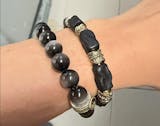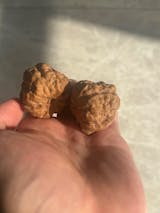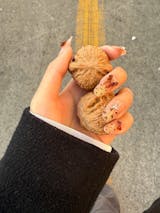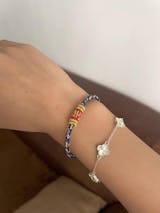Explore Horse-face Skirt(mamianqun):History,Styles, and Cultural Significance
Introduction:
The horse-face skirt, or "mamianqun," is a traditional Chinese garment that has experienced a resurgence in popularity in the last few years. This piece of clothing conveys the unique aesthetic pursuit of China. Today we will explore the history, styles, and cultural significance of horse-face skirts.

The History of Horse-face Skirt
The "Horse-face Skirt" was one of the main skirts for women in ancient China."Ma Mian" is an architectural term for a tower-like structure protruding from a city wall. The horse-face skirt has two overlapping doors, forming a trapezoidal glossy surface, which shares similarity to"horse-face", hence the name "Horse-face Skirt".
Origins in the Ming Dynasty
The horse-face skirt first appeared during the Ming Dynasty, a period noted for its cultural and artistic renaissance. Initially worn by women of the imperial court and nobility, the skirt symbolized elegance and high social status.
Evolution in the Qing Dynasty
During the Qing Dynasty (1644-1912), the horse-face skirt remained very popular but the styles have changed. Some new fashion elements were introduced by the Manchu rulers of the Qing Dynasty, which were integrated into the existing Han Chinese styles. The horse-face skirt became even more elaborate as it used more decorative components such as gold and silver threads.
Contemporary Revival
The horse-face skirt is currently experiencing its revival period. This revival is characterized by a blend of historical appreciation and modern innovation, making the costume perfect for contemporary audiences.

The Styles of Horse-face Skirt
Plain Horse-face Skirts
Fabric: Typically made from cotton or linen, plain horse-face skirts are designed for everyday wear.
Color: These skirts often come in solid, muted colors like black, white, blue, and brown.
Embroidered Horse-face Skirts
Fabric: Made from higher-quality materials such as silk, satin, or brocade.
Color: Bright colors are preferable, and red, green, gold, and blue are popular choices.
Silk Horse-face Skirts
Fabric: Luxurious silk, sometimes mixed with other fine materials like satin or brocade.
Color: Rich, vibrant hues like royal blue, emerald green, and deep red.
Manchu-influenced Horse-face Skirts
Fabric: Combination of silk and other premium fabrics.
Color: Varied color palette, often featuring contrasting borders.
Modern Reinterpretations
Fabric: Considering its durability, modern materials like polyester blends are often used to design modern horse-face skirt.
Color: Various colors and shades, including contemporary hues and traditional shades.

The Cultural Significance of Horse-face Skirt
As a typical skirt style in the dress code of women in ancient China, the horse-face skirt represents a crucial aesthetic conception in the life of ancient Chinese women, which features the Zen ideology of lightweight structure, heavy ornamentation, and freedom of the body, leaving behind the historical and cultural imprints that comply with the world's aesthetics.
Once it was cultural relic in museums and textbooks, but now it is a popular garment in people’s daily life. The horse-face skirt went viral,behind which is a microcosm on the way of the revival of Chinese civilization, allowing people to see the real vitality hanfu releases.

Conclusion
It is not an occasional issue for the horse-face skirt to regain its popularity in contemporary times. On the contrary,the fact that it can garner a large number of fans is exactly a reflection of contemporary aesthetic return and spiritual reconstruction. Nowadays,the horse-face skirt has become a new fashion trend at home and abroad.


























































